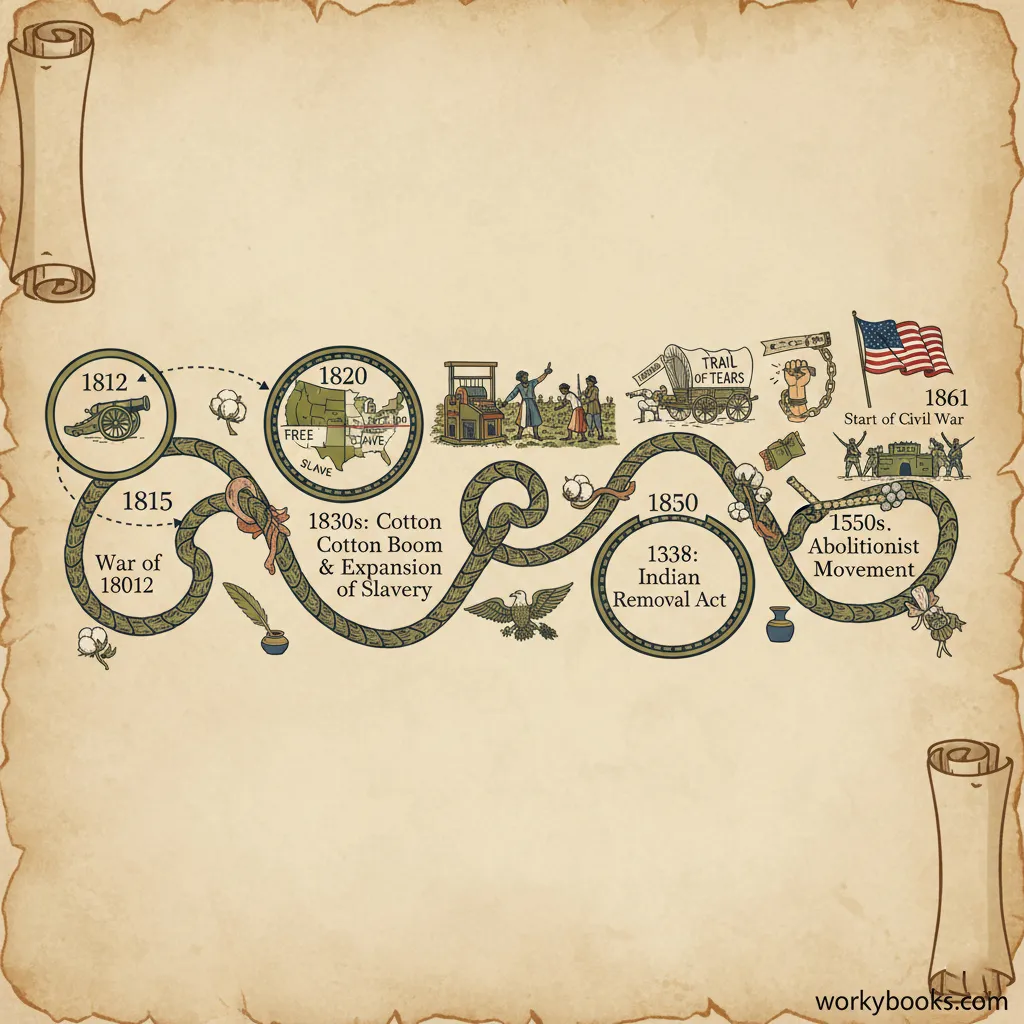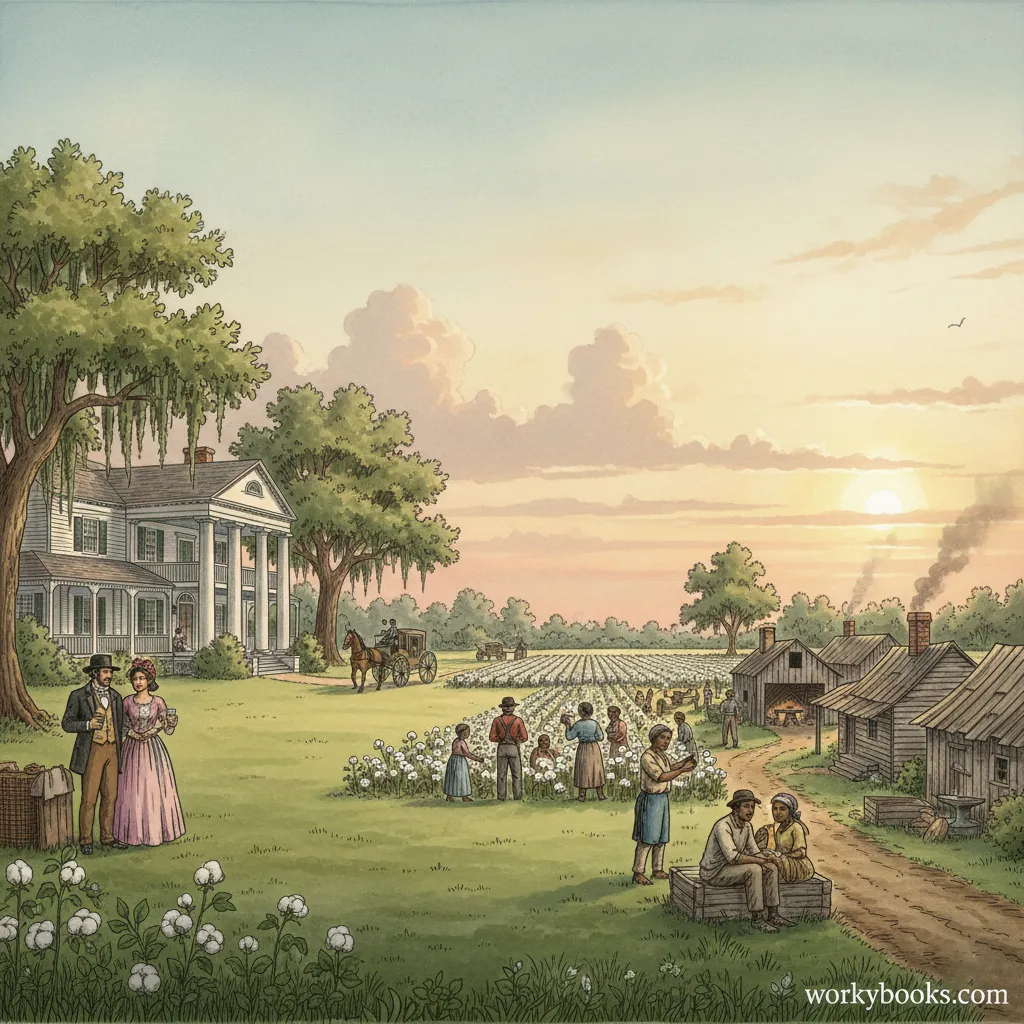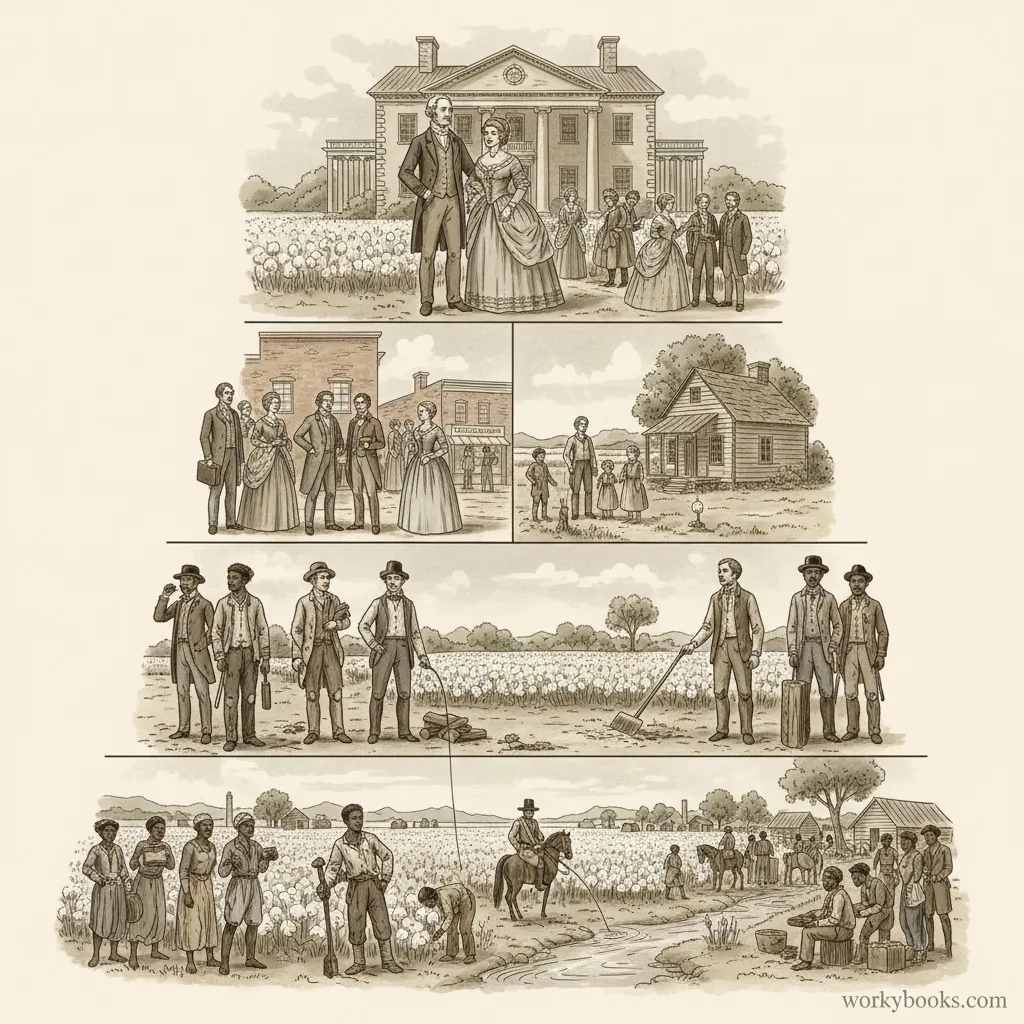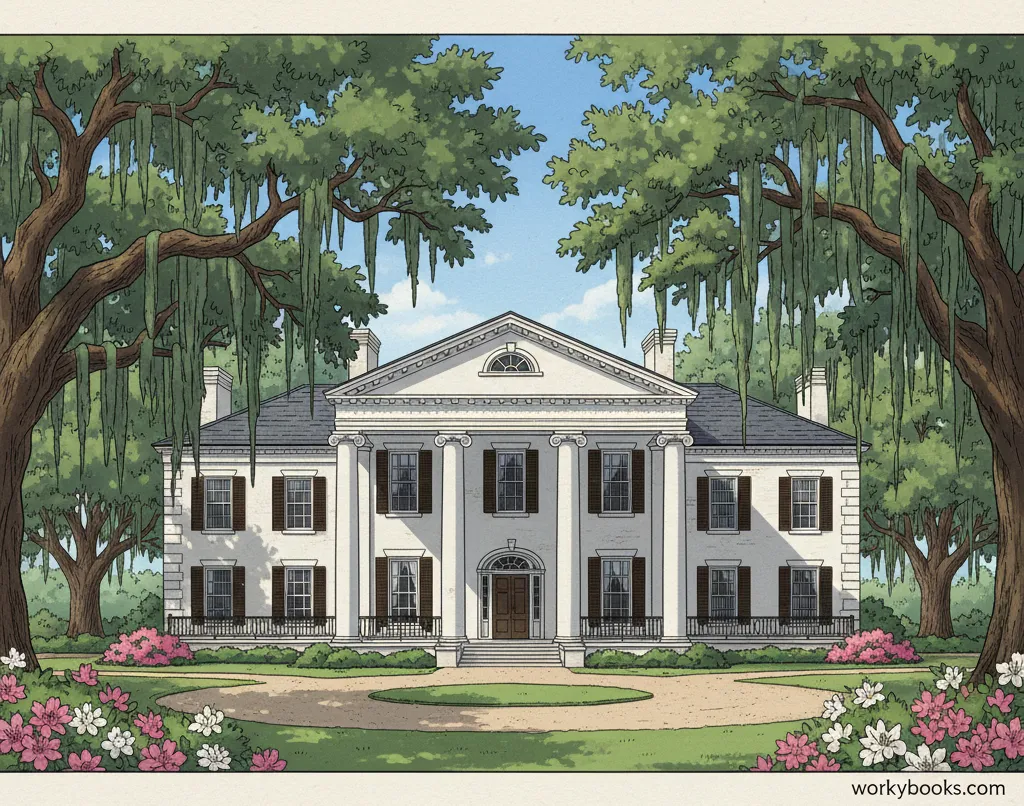Antebellum
Understanding Life in America Before the Civil War
What is the Antebellum Period?

The word "antebellum" comes from Latin words meaning "before the war." In American history, the Antebellum Period refers to the time between the War of 1812 and the Civil War (approximately 1815-1861).
This was a time of great change in the United States. The country was growing rapidly, new states were joining the Union, and different regions were developing in very different ways. The North was becoming more industrial with factories and cities, while the South remained agricultural with large plantations.
History Fact!
The Antebellum period saw many important inventions like the cotton gin, which made cotton farming much more profitable and increased the demand for enslaved labor in the South.
Life in the Antebellum South

Life in the Antebellum South was centered around agriculture, especially cotton, tobacco, and sugar. The economy depended heavily on enslaved labor, with large plantations producing crops for export to Europe and the Northern states.
Plantation Economy
Large farms growing cash crops like cotton and tobacco
Enslaved Labor
Millions of enslaved Africans and African Americans provided the workforce
Social Structure
Wealthy plantation owners, small farmers, poor whites, and enslaved people
Regional Differences
The South developed differently from the industrial North
Political Tensions
Disagreements over slavery and states' rights grew stronger
While a small percentage of Southerners owned large plantations, most white Southerners were small farmers who owned few or no enslaved people. However, the plantation system and the ideology of white supremacy affected everyone in the region.
Antebellum Society

Antebellum society was hierarchical, with clear social classes based on wealth, race, and gender. Understanding this social structure helps explain the tensions that led to the Civil War.
Wealthy Planters
A small elite class that controlled most of the wealth and political power
Middle Class
Professionals, merchants, and skilled workers in towns and cities
Yeoman Farmers
Small farmers who owned their land but few or no enslaved people
Poor Whites
Landless laborers who struggled economically
Enslaved People
African Americans who were considered property and had no rights
Women in Antebellum society had limited rights regardless of their social class. They could not vote, hold public office, or own property in their own name after marriage. However, some women began to challenge these restrictions, particularly in the growing abolitionist and women's rights movements.
Antebellum Architecture

Antebellum architecture refers to the building styles popular in the Southern United States before the Civil War. The most famous examples are the large plantation mansions, but the style influenced many types of buildings.
Greek Revival
The most common style, featuring columns inspired by ancient Greek temples
Large Porches
Wide verandas provided shade and outdoor living space in the hot climate
Symmetrical Design
Buildings were balanced with matching windows and features on both sides
High Ceilings
Tall rooms helped keep buildings cool in the summer heat
Formal Gardens
Landscaped gardens with walking paths and decorative plants
These grand homes represented the wealth and status of plantation owners. However, it's important to remember that this beautiful architecture was made possible by the labor of enslaved people who lived in much simpler, often inadequate housing nearby.
Did You Know?
Many Antebellum homes had separate staircases - a grand staircase for family and guests, and a simpler "servants' staircase" for enslaved workers.
Antebellum Period Quiz
Test your knowledge with this quiz! Answer all 5 questions to see how much you've learned about the Antebellum period.
Frequently Asked Questions
Here are answers to some common questions about the Antebellum period:
History Facts About the Antebellum Period
Discover some fascinating facts about the Antebellum period in American history!
Population Growth
During the Antebellum period, the U.S. population grew from about 8 million to 31 million people! This was due to both natural increase and immigration from Europe.
King Cotton
By 1860, the South was producing about two-thirds of the world's cotton supply. Southern leaders believed "Cotton is King" and that this would protect them in conflicts with the North.
Technological Changes
The Antebellum period saw many important inventions including the telegraph, sewing machine, and mechanical reaper. These inventions transformed communication, clothing production, and agriculture.
Education Differences
The North generally had more public schools and higher literacy rates than the South. Some Southern states even passed laws making it illegal to teach enslaved people to read and write.


